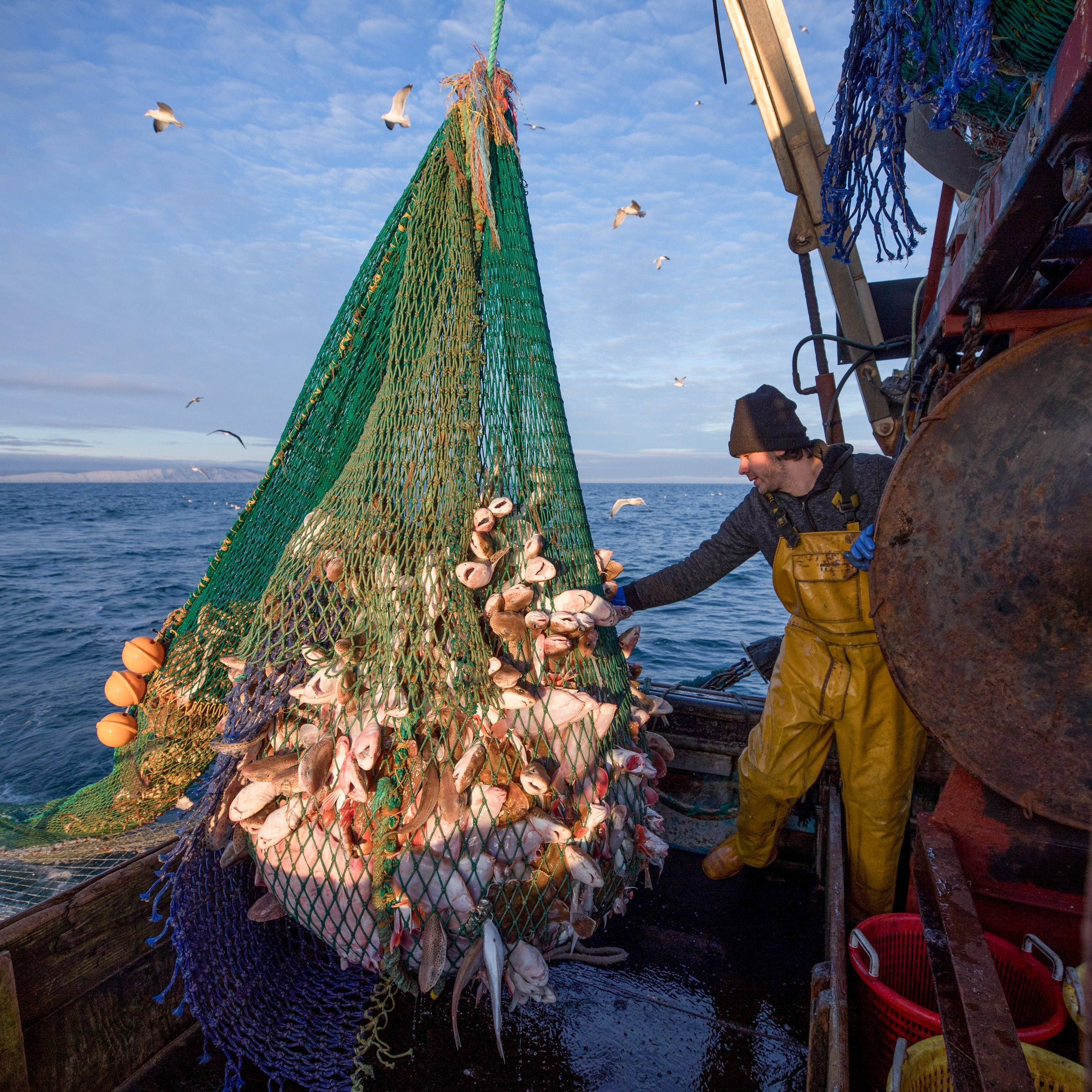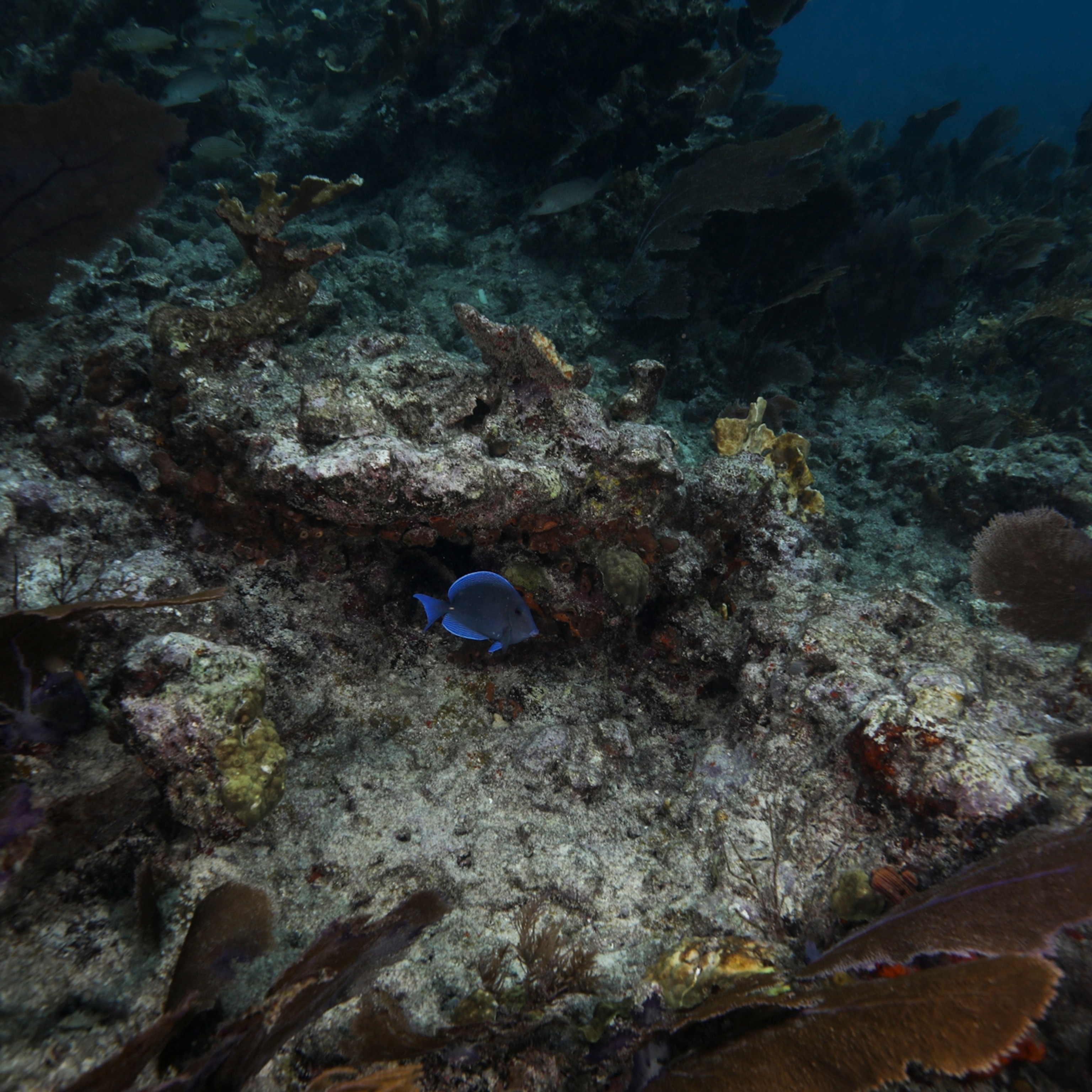
How we can help coral and seabirds survive a warming world
Reducing CO2 emissions is crucial, but there are hands-on ways to protect animals from inevitable warming.
Global warming is not just increasing average temperatures on land, it’s heating up the oceans as well. As marine heat waves become more common, they are disrupting longstanding relationships between species that have come to depend on each other.
Corals may lose the algae living inside of them, causing them to bleach, or even die, often after being hit by more than one heat wave. Large schools of fish move to more comfortable climes, forcing the seabirds that need them to feed their young to fly much longer distances from the shores where their kind has been nesting for ages.
The only sustainable, long-term approach to these issues is to drastically reduce our greenhouse gas emissions. But while we impatiently wait for international agreements to be reached and measures to be effectively implemented, isn’t there something we can do now to help the seabirds and corals we care about to withstand the heat? Two papers published in this week’s issue of Science suggest that yes, there is.
Mind your own reef
To find out where, when, and why corals are most likely to die off after marine heat waves, conservation scientist Mary Donovan of Arizona State University and a group of colleagues in the United States compiled data from 223 coral reef sites around the world, all collected by Reef Check, an organization training citizen scientists to monitor coral reefs and kelp forests. And indeed, some of the basic observations contributed by the volunteers predicted where coral loss was more likely to occur.
The most common sign of vulnerability to heat waves turned out to be seaweed: in places where volunteers reported plenty of seaweed among the coral, 10 times more coral was lost, on average, than in places where seaweed was rare or absent. Some of the chemicals in seaweed can bleach corals if there is direct contact, explains Donovan, and seaweeds also release organic compounds into the water that reduce the amount of oxygen, which stresses the corals. That means heat waves are even harder to bear for corals in reefs with lots of seaweed.
A lot of sea urchins on a reef also turned out to be bad news in many places. A dozen sea urchins across a thousand square feet of reef is usually fine, says Donovan, as they often eat some of the seaweed. But if there are many more of them—in some places there can be up to a thousand per thousand square feet—that appears to be linked to higher coral loss. “Then they start gnawing away at the coral as well,” she adds, removing the protective outer skeleton and eating the algae that live inside the coral. The new study revealed that reefs with many urchins are also significantly more vulnerable to heat waves.
Though there is no doubt that global warming is an important cause of coral death from bleaching, and must continue to our efforts to bring it under control, says Donovan, the study does suggest local measures can also help mitigate the damage.
“Excessive seaweed growth can be the consequence of pollution from cesspools or septic tanks leaking into the ground near the ocean,” she explains, “or runoff from agricultural lands or golf courses.” Reducing pollution at its source would very likely help to make nearby reefs more resilient.
Avoiding fishing for seaweed-eating species is also important. This is being attempted, for example, in Hawai’i’s Kahekili Herbivore Fisheries Management Area off the island of Maui, where the take of plant-eating fish is limited. “We’re also working with local communities elsewhere in the state to manage fisheries,” Donovan says, adding that a healthy fish population also helps to control urchins.
Nancy Knowlton, an emeritus coral reef biologist at the National Museum of Natural History who was not involved in the study, agrees that such local efforts will be very important for reefs. “I don’t think any ocean conservation works unless local people feel part of it and feel that it serves their interests.”
How you can help
—If you’re a scuba diver, here's what to do around coral reefs.
—Clean up a beach, if there’s one near you.
—Avoid seaweed-eating species when fishing on reefs.
—Learn which commercial fish are sustainable.
Dietary concerns
Local communities are not the only ones eating fish, of course, or even most of it. Much of the world is increasingly getting its fish from enormous ships roaming the world’s oceans, harvesting as they go. Another paper in Science this week, which compares the fates of seabirds in the Northern and Southern hemispheres, suggests intensive commercial fishing may be making life on a warming planet much harder for birds.
By analyzing 122 datasets reporting the average number of fledglings emerging from the carefully monitored nests of 66 seabird species between 1966 and 2018, an international team of scientists discovered striking differences between the hemispheres. The average number of young per nest successfully raised by birds whose diets consist at least partly of fish decreased significantly more in the Northern Hemisphere, which may ultimately result in decreasing population numbers.
“The Northern Hemisphere is both warming faster and more heavily affected by human pressures such as fisheries and pollution,” says ecologist William Sydeman of the Farallon Institute in California who led the study. “This makes it hard to distinguish between the relative importance of the two based on these data.” But the larger impacts on birds that are known to depend on fish does suggest that they are at the heart of the problem. “Most plankton-eating birds are raising as many chicks as they used to.”
There are various ways in which climate change and other human pressures might make it harder for seabirds to find the fish they need to feed their young, Sydeman says. As the oceans get warmer and fish seek out cooler areas, birds may have to cover larger distances between foraging areas and nesting colonies or dive deeper to find food as fish seek out the cooler depths. “Some species, such as kittiwakes, simply cannot do this,” he says.
Because of their fast metabolisms, seabirds need to catch about half their body weight in fish every day to survive, and even more to provide for their young, Sydeman says. “This makes them vulnerable to changes in the accessibility of their prey.”
Don’t eat all the bird food
If the impacts of climate change on seabird breeding success are indeed mainly the consequence of difficulties in finding fish, we must do something else to help them survive climate change, the researchers argue in the paper: limit fisheries in space and time.
“In the Northern Hemisphere, especially, we need more restrictive measures to help bird populations recover,” Sydeman says, “and in the Southern Hemisphere, where fisheries are increasing, we should avoid making the same mistakes.”
Of growing concern in the Southern Hemisphere are fisheries focusing on smaller species, such as anchovies or even the krill that many birds feed to their young. “For the birds, it’s really about the food,” Sydeman says. “So anything we can do to help maintain their prey, particularly closing fisheries around the colonies during the breeding season, when they really need food, would be very welcome.”
There are promising examples of that: for instance, areas in the North Sea where commercial fishing was excluded, helping kittiwakes to raise more young. Even the endangered African penguin, a fish- eater from the Southern Hemisphere, appears to have benefited from a local ban on purse seine fishing for sardines and anchovies—their favorite fish—around their nesting colonies.
“A modest improvement in breeding success can have a positive effect over a longer period of time,” Sydeman says. “But in this case, more needs to be done, as these penguins are in deep trouble.”
Beyond local restrictions around breeding colonies, which are often temporary, Sydeman and colleagues argue in the paper that large marine protected areas where sea creatures can find safe havens— and plenty of food—year-round are also important to help seabirds survive.
The same is certainly true for coral reefs, Knowlton says, and there are benefits for humans, as well. “Marine protected areas also benefit fisheries. They provide a way of having a higher sustainable harvest.”
In addition, she says, they can buy species time while we get our climate house in order. “Our climate efforts are really important, but they will take a couple of decades to have an effect, even under the best possible scenario. So these things we can already do locally will also be really important.”








